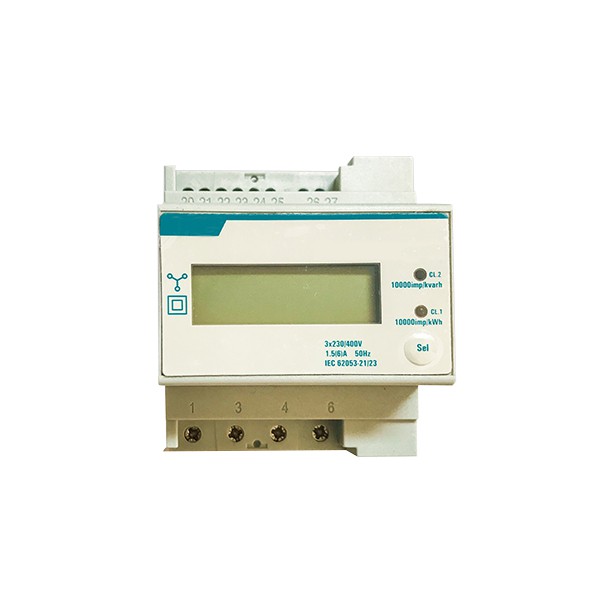What is Energy Meter Constant – Accurate Definition

The energy meter constant helps to turn what the meter shows into useful energy data. Energy pros rely on it for correct metering, billing, and managing energy. We'll look at what the meter constant means, and its types like imp/kWh or kWh/imp. Also, we'll cover why measuring reactive energy matters and how to keep meters accurate through calibration.
Understanding the Energy Meter Constant
The meter constant is a key part of energy metering. It shows the connection between energy use and what the meter shows. This number links the energy used to what the meter counts, like pulses or revolutions. It's crucial for turning the meter's info into useful data on energy use, making accurate billing and energy management possible.
Definition and Significance
The energy meter constant, or meter multiplier, is very important. It connects what the meter says to the real energy used. This figure shows the relationship between what the meter measures and the actual energy consumed. Knowing about the meter constant is key for energy industry workers. It helps ensure energy use is measured correctly.
Role in Energy Metering
The meter constant is vital in energy metering. It links energy use to what the meter shows. It's used to convert what the meter outputs, like pulses, into actual energy data. This data is crucial for accurate billing and managing energy use well. It guarantees precise measurement and recording of energy use.
Expressions of Meter Constants
The terms for meter constants might be hard to understand. They are vital for the right energy measurement and to make sure different meters work together. These terms include imp/kWh and kWh/imp. They're mostly used in energy meters with pulses.
imp/kWh and kWh/imp
Imp/kWh shows how many pulses the meter gives for each kilowatt-hour used. On the other hand, kWh/imp tells us how much energy one pulse represents. These terms are key in meters with pulse features. They help match the meter's output with the actual energy use.
Revolutions per Kilowatt-hour
Another way to talk about meter constants is by using revolutions per kilowatt-hour. Ferraris meters, for instance, gauge energy with a spinning disc. Each turn of the disc equals a set amount of energy use. This is known as the meter constant.
Pulse Outputs for Reactive Energy
Energy meters might have an extra pulse output for just reactive energy. This lets us watch and pay for how we use reactive power differently. With an imp/kvar pulse output, places like businesses or utility companies can watch how they use reactive power. This helps them use energy more efficiently.
Importance of Reactive Energy Measurement
It's key to measure reactive energy for better power factor and energy use. When we track active and reactive energy, we see where to improve power factor. This cuts energy loss and lowers bills. Using this data, businesses can manage energy smarter. This leads to saving money and being eco-friendlier.
Calibration of imp/kvar Pulse Output
Calibrating the imp/kvar pulse output is crucial for measuring reactive energy well. It involves checking the pulse output's accuracy and making adjustments. This keeps the reactive energy numbers accurate. Then, they can be used for saving energy and billing right.
| Energy Meter Specification | Fenice Energy Meter | Industry Standard |
|---|---|---|
| Meter Constant (Kh) | 10 kWh/pulse | 1-10 kWh/pulse |
| Pulse Output | imp/kWh and imp/kvar | imp/kWh and imp/kvar |
| Accuracy Class | Class 0.5S | Class 0.5S – 2.0 |
| Operating Voltage | 230V ± 20%, 50Hz | 230V ± 20%, 50Hz |
| Price (INR) | 5,999 | 4,999 – 9,999 |
what is energy meter constant
Keeping the meter constant well-calibrated is crucial for accurate and dependable energy metering. Calibration ensures the meter's output is correct. It checks pulses, revolutions, or the Kh value, adjusting things inside as needed. This way, the meter rightly measures your energy use, leading to accurate bills and smart energy use.
Meter Constant Calibration
Calibrating the meter constant is key to measuring energy use correctly. By checking the meter's output for accuracy and adjusting it, energy experts can ensure reliable data on energy use. This data leads to accurate bills and helps manage energy well for homes and businesses.
Ensuring Accuracy over Time
Regular maintenance and calibration maintain the meter constant's accuracy over the years. Environmental factors and regular use might affect the meter and its constant. By often making sure the meter is on point, tracking energy use and billing accurately becomes easier. This step is very important for places using a lot of energy, aiming to use energy wisely and cut costs.






